A new technology that understands who is behind the wall with Wi-Fi appears

Researchers at the University of California, Santa Barbara, announced that they have developed a new technology that can use Wi-Fi to identify people behind a wall. This technology, called “XModal-ID”, can detect with high accuracy whether or not the detected person is the same person as the person in the image by detecting the movement of the person using the Wi-Fi signal and collating it with another image. It is possible to do.
XModal-ID: Through-Wall Person Identification from Candidate Video Footage Using WiFi
Researchers' new method enables identifying a person through walls from candidate video footage, using only WiFi
https://techxplore.com/news/2019-10-method-enables-person-walls-candidate.html
When you play the following 4 minute movie, you can see what technology XModal-ID is all about.
Through-wall person identification from candidate video footage using WiFi-YouTube
The principle of XModal-ID itself is simple: it extracts features of how to walk based on video, and collates it with human movements detected from Wi-Fi signals.
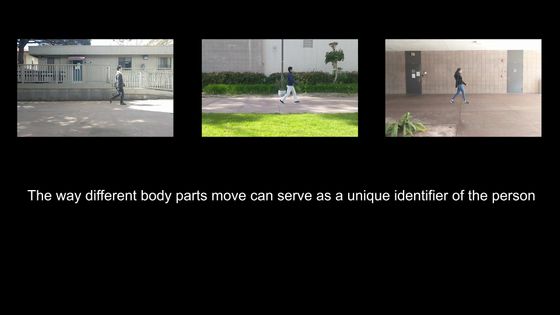
The Wi-Fi signal is detected by a pair of Wi-Fi transmitters / receivers like this, which are generally available on the market.

The accuracy was high, and a test using a total of 360 videos and 8 Wi-Fi signals that recorded 8 people was able to identify only a specific person with a probability of 89%.
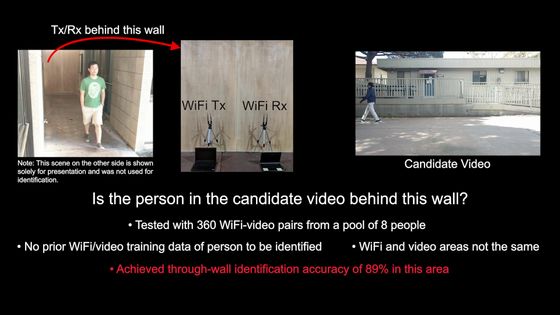
Even if you walk across the front of the Wi-Fi transceiver ...
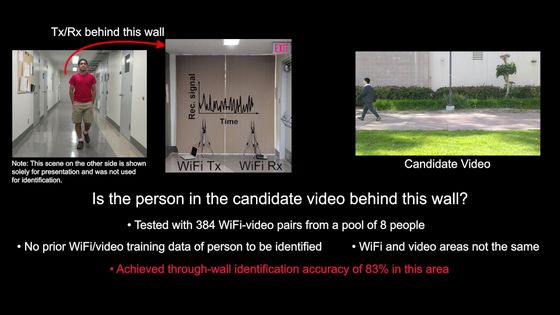
Even if you walk away from the Wi-Fi transceiver, the accuracy does not change.
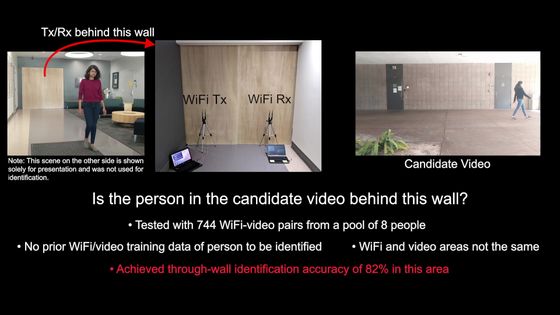
It is not necessary to learn movement by machine learning etc., so it is necessary to prepare learning data in advance and train the movement of people, or to measure the area detected by Wi-Fi in advance There is none. All you need to know is a video of the person you want to identify.
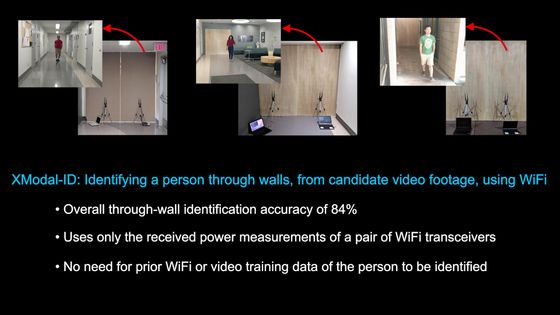
Although the principle is simple, the technology used is advanced. First, at the stage of analyzing the walking image, a whole body 3D mesh model is created from the image using the mesh decoding algorithm, and the disturbance of electromagnetic waves generated when the person walks in the Wi-Fi area is simulated by the
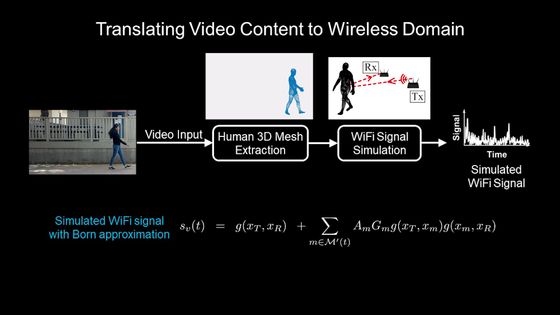
After that, the signal actually measured by the Wi-Fi transceiver is analyzed using equations such as
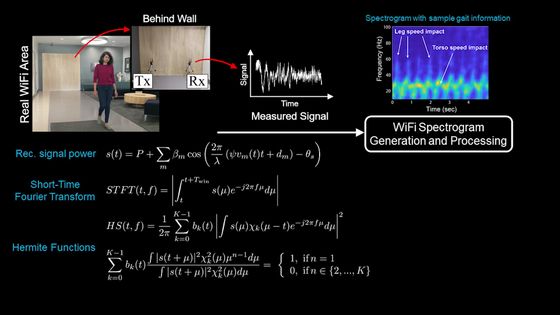
Using this technology, for example, even if a burglar reflected on a surveillance camera is masked and you do not know your identity, you can simply place a Wi-Fi transceiver in front of a house that seems to be a hiding place, and the criminal will be there So that you can proceed with the investigation safely and efficiently.

Professor Yasamine Mostofi, who led the research, said, “With this approach, it is possible to determine whether the person behind the wall and the person on the image are the same with only commercially available equipment,” operating at low cost Emphasized the practicality of possible XModal-ID.
Related Posts:







